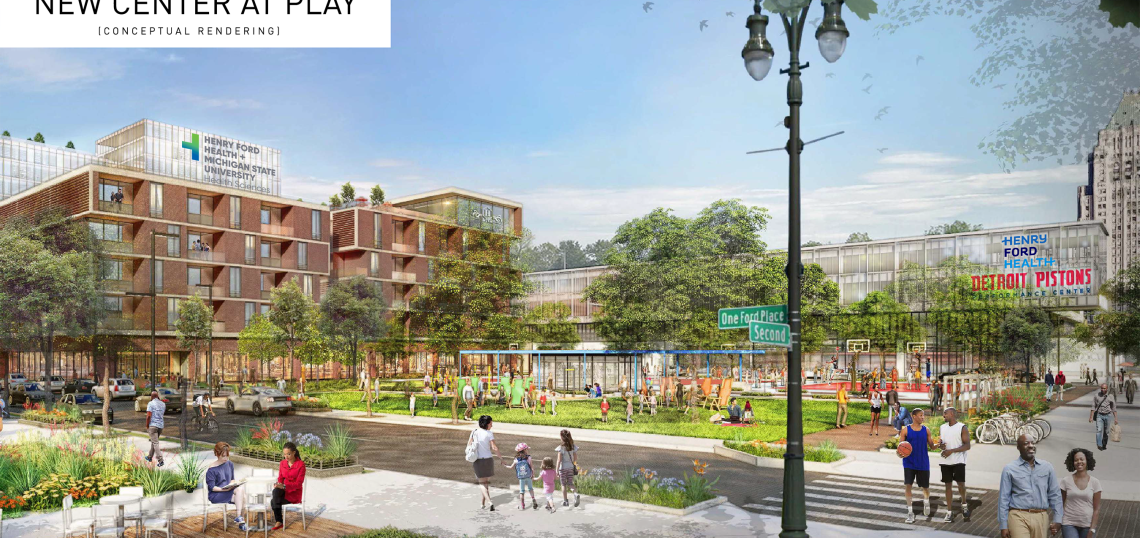The Community Benefits process is underway for the massive $3 billion development that will bring a new hospital tower, residential, office space, green space, and parking decks to New Center. We're getting new details about the development, including the incentives it will be going for.
Developers presented budget details on the project to the community last night. They'll be seeking $273 million over 35 years in total. This breaks down to:
- $53.5 million in various property tax abatements
- $105.3 million in Brownfield tax increment financing
- $114.4 million in State of Michigan Transformation Brownfield Program
These incentives are for the adaptive reuse of One Ford Place, the two new residential buildings, the east parking garage, and the research building. The Henry Ford Hospital tower and south campus will not be seeking tax incentives.
According to the Detroit Economic Growth Corporation, the project would not happen without tax incentives because it wouldn't be able to secure financing and it wouldn't be worth investing in.
These benefits are given only if the development is completed. The total assumes all buildings have been built. The abatements are property tax discounts for up to 17 years, while brownfield tax increment financing is a reimbursement to the developer from tax revenue from the project.
According to the presentation, the development would generate $371 million in tax revenue over 35 years.
The residential and research campus would bring 662 residential units, a research building, and an 800-space parking deck east of the Lodge. The adaptive reuse of One Ford Place includes 403 units and will cost $189 million. One of the new buildings will house 154 residential units with a budget of $79 million and the other will have 105 units at $54 million. 20 percent of the units will be offered at those making 50 percent area median income.
The offerings for residential units will break down to 311 studios, 288 one-bedrooms, and 63 two-bedroom apartments.
The Community Benefits meetings continue Tuesdays in November and they're open to the public to join. On November 7, the discussion will be around potential benefits for the surrounding neighborhoods.






